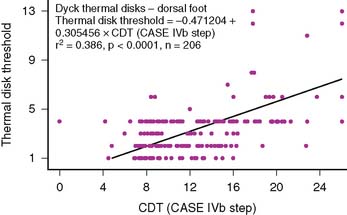Figure 77-1 Pair 1 = P versus N; Pair 2 = P versus G; and Pair 3 = P versus C with all thermodes at A°; Pair 4 = P versus C at A-3°; Pair 5 = P versus C at A-8°; and Pair 6 = P versus C at A-20°. In practice, we have a separate cooling platform for C thermodes 4, 5, and 6.
All testing is done using pairs of stimuli—the reference stimulus (P) and a test stimulus N, G, C (at A or at lower temperatures). Reference and test stimuli are given during two periods (each being 1.5 to 2 seconds in duration). Assignment of reference and test stimuli to periods 1 or 2 is done by restricted randomization so that an equal number of test stimuli fall into period 1 of a test series in two-alternative forced-choice testing (described later). The patient must choose which of periods 1 or 2 feel cooler. The technologist says “one” then “two” with presentation of a pair of stimulus events. The technologist lets the thermode rest on the skin for a period of about 1.5 seconds and allows the full weight of the thermode to rest on the skin, the weight of thermodes being the same.
Testing is done at standard sites, that is, dorsal foot overlaying 3, 4, and 5 metatarsal bones (1); plantar foot distal to the heads of the 3, 4, and 5 metatarsal bones (2); midlateral leg (3); midanterior thigh (4); dorsal hand (5), midvolar forearm (6), shoulder (7), and maxillary face (8).
At a standard anatomic site, testing may begin using a simple method of limits to assess CdiscT. To illustrate, the observer may begin testing P versus C (pair 3) with five pairs of stimuli at a given site (e.g., dorsal foot). If the patient correctly identifies the correct cooler stimulus five of five times, two-alternative forced-choice testing may begin with thermode pair 2 (P versus G). If only two or three of five cool stimuli are correctly identified, CdiscT probably is at greater cooling differences than the one being tested. Therefore, two-alternative forced-choice testing may begin with pair 3 or 4 – observer’s choice. Two-alternative forced-choice testing is then used to determine threshold more accurately. After beginning two-alternative forced-choice testing, testing proceeds in one direction without further turnarounds. In our two-alternative forced-choice testing approach, the following rules are followed: 7 or 8 of 10 correct responses are declared as threshold; less than 7 correct responses, the threshold is at a higher stimulus level; and greater than 8 correct responses, the threshold is at lower stimulus levels (Table 77-1). Testing continues until threshold is estimated or the test is declared supersensitive or insensitive. The predetermined testing sequence can be provided as paper forms or by use of a software program (WR Medical Electronics, Inc.).
Table 77-1 Dyck cooling dectection threshold thermal disks using two-alternative forced choice algorithm
| Pair | Correct responses (of 10) | Threshold |
|---|---|---|
| Pair 1 – P versus N | >8 7 or 8 < 7 | 1 2 3 |
| Pair 2 – P versus G | >8 7 or 8 < 7 | Test pair 1 4 Test pair 3 |
| Pair 3 – P versus C | >8 7 or 8 < 7 | 5 6 Test pair 4 |
| Pair 4 – P versus C A-3° C | >8 7 or 8 < 7 | 7 8 Test pair 5 |
| Pair 5 – P versus C A-8° C | >8 7 or 8 < 7 | 9 10 Test pair 6 |
| Pair 6 – P versus C A-20° C | >8 7 or 8 < 7 | 11 12 13 |
In Figure 77-2, we show CDT thresholds for dorsal foot of 206 persons in health. The figure shows that threshold increases with advancing age.

Figure 77-2 To assess whether CdiscT is correlated with CDT, we regressed the former on the latter. A highly significant correlation was found.
Stay updated, free articles. Join our Telegram channel

Full access? Get Clinical Tree








